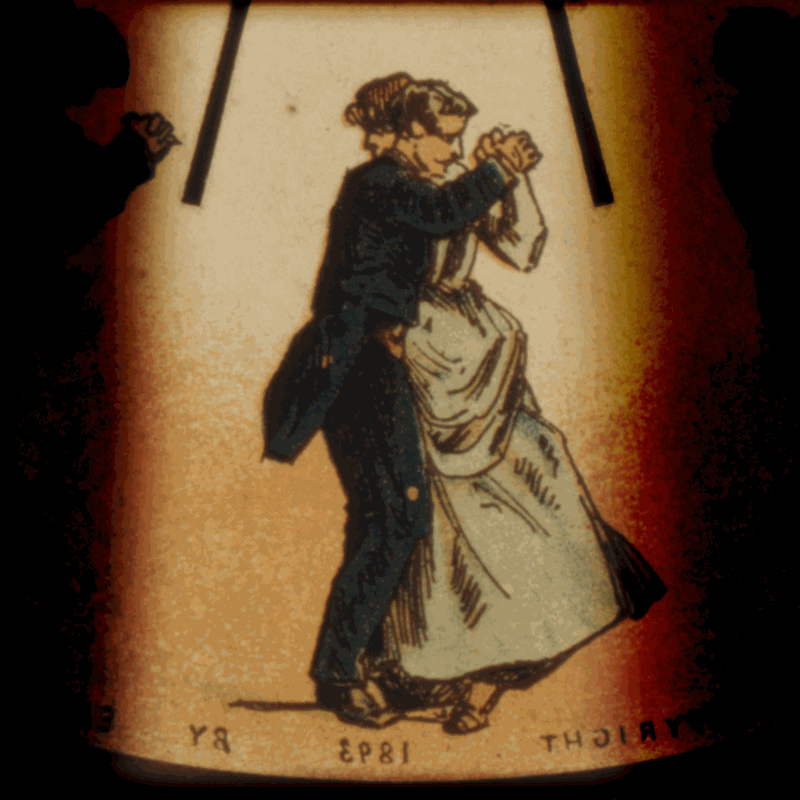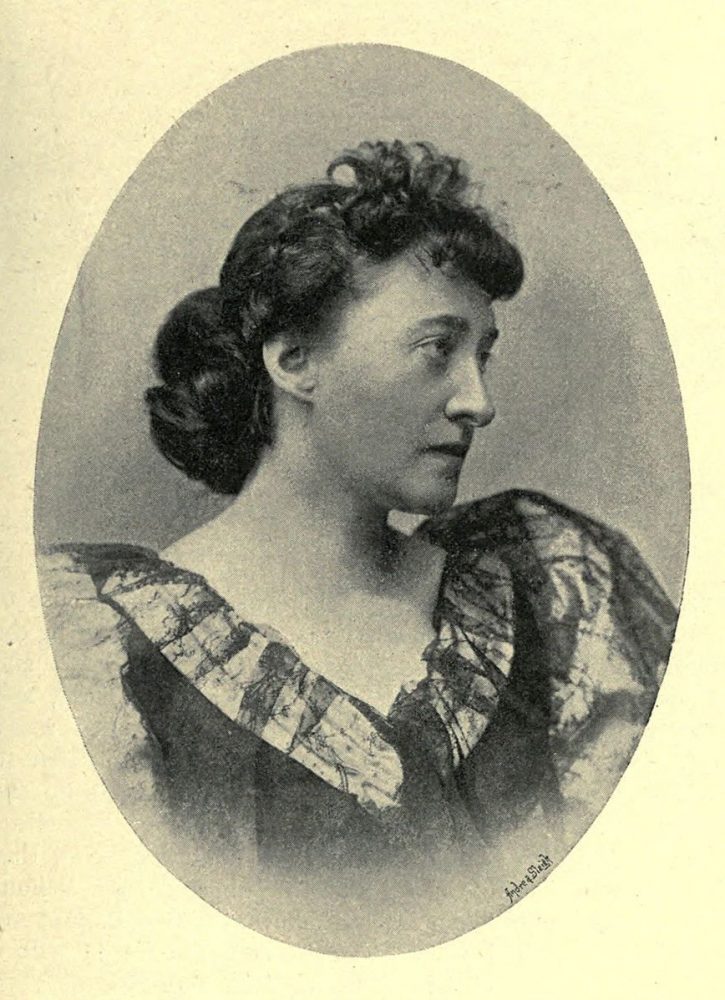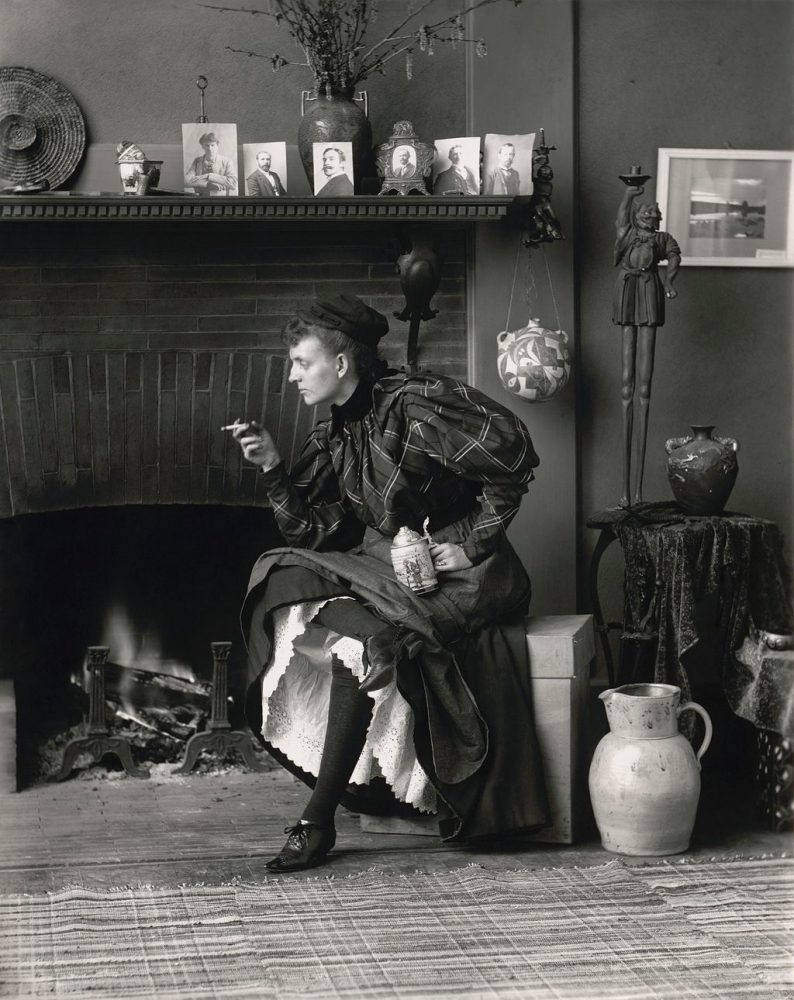Woman Exploring their Autonomy Through Vocational Work and The Yellow Book
© Copyright 2017 Adriana Carpanzano, Ryerson University
Ada Radford

Born in the Radford family, Ada Wallas was raisedin Plymouth in 1859 and had nine other siblings. In December 1897, she married Graham Wallas, a socialist and the co-founder of London School of Economics. As well as being a successful author, Radford was also a school teacher who taught for many years at Wimbledon High School. Most of Radford’s work can be found within The Yellow Book as well as The Westminster Gazette. Much of Radford’s work followed the theme of the New Woman or women pursuing their autonomy through their vocational work. Radford was one of the many women who used The Yellow Book as a platform to pursue her own vocational work, and convey this message simultaneously.
Her short story “Lucy Wren” can be found in volume thirteen of The Yellow Book, and it follows a main female protagonist who feels unsatisfied and uncomfortable with the life she has made for herself. Although the main character, Lucy, has established her life as a schoolteacher and wholly supports herself, she stills feels as though this is not the person she wishes to be, and wants to find herself outside of the social constructs of the time. During the time that the story was written
The New Woman

The term New Woman was first introduced to society in the late nineteenth century by writer Sarah Grand. It was discovered due to the high volume of women who began working and establishing their independence in society, rather than depending on their husbands. The novel New Woman Readers by author Carolyn Christensen Nelson states, “In short she [the New Woman] rejected the traditional role for women and demanded emancipation” (Nelson ix). This is an example of how women wished to branch off on their own, and went as far as protesting for their place within society. This also played a large role in new emerging ideas of equality between the sexes, due to women becoming active and contributing members of society. The volume of women pursuing their own vocational work was increasing the 1890s, and it can be seen throughout many forms of literature and art.
The New Woman was not only a mentality, but it also affected women physically whether it was a drastic new way of changing their personal style, including how they dressed, or the way they modified their behaviours. Women tended to act less “lady like”, while making the statement that it shouldn’t be anyone’s concern about how a woman acts. Nelson goes on to define the term New Woman by stating, “One who pushed limits in a male dominated society” (Nelson 1). With the critical claim of women using their vocational work to pursue their own autonomy, it becomes relevant with the New Woman since they used this to overstep boundaries and push new ideas into the seemingly male dominated society. The ideas of the New Woman placed emphasis breaking the ideologies that men had regarding the place of women as a person in society. In the successful novel Pride & Prejudice by author Jane Austen it states,“A woman must have a thorough knowledge of music, singing, drawing, dancing, and the modern languages…. and besides all this, she must possess a certain something in her air and manner of walking, the tone of her voice,

her address and expressions…(Austen 27). This shows that women were supposed to act a certain way. In the ephemeral card “Womens Rights” it set out proper rules for women such as where she belongs in a domestic view and how she must work along side her father and brothers. Women became more involved with performing the stereotypical male tasks such as voting or pursuing a career of their own. and understood that there was a way of men and women being equal within society. This was the major understanding that the society in the 1890s had regarding men and women; simply two different groups of people who were born to complete different tasks and one could not perform the work of the other. This is where women decided that that way of thinking was incorrect and decided to bring the idea of the New Woman into play.
The Story “Lucy Wren”
The story “Lucy Wren” has a large focus on women pursuing vocational work as depicted by the New Woman, however her analysis describes that women should be able to choose freely the life they wish to lead, without societal pressures. Within the story, Radford encourages this theme by creating her main character as a self dependent, striving working female. In the 1890s Victorian Britain, there were a significant number of women who felt they needed to break free from certain stereotypes that were set in place for them. The story reflects this by immediately beginning with a description of the main characters career, and how much her yearly income is

“Lucy Wren found herself teaching at a large school, with a salary of £95 a year and a prospect raise of £5 at the end of the year” (Radford 272). Radford is trying to establish the main character as an independent and working woman, who has no issues with being on her own. The story establishes the main character as one who has created this fantastic and independent life for herself, the writer still makes Lucy to be unhappy in a sense, as she does not praise her life as a fantastic one. “‘Our life,’ said Katherine ‘it is so delightfully free. Think of being a governess in a family’ Yes, Lucy has saved herself from that” (272). Although Lucy knows she has saved herself from a life of dependence on a man and is very grateful for having established herself, she still longs for more than this lifestyle of the New Woman and living with her best friend. Radford includes underlying tones of romance in the story that allow Lucy understand what exactly it is that she wants, and it strays away from the idea of only being successful with her career. Interestingly, it seems as though Radford created Lucy to appreciate her place as a New Woman, but still feel that her connections to others are as important as her established career.
The New Woman is “One who pushed limits in a male dominated society” (Nelson 1) and Lucy did this by using her autonomy, but she still longs for the romance with a man, which strays from her role as a New Woman. “No questions – No conscience – she was Lucy Wren today – not the safe friend of Ella’s husband – not the best companion for girls – not the woman everyone was better for knowing she was just herself (Radford 282). There is also a part of Lucy who wishes she could be herself, perhaps Lucy feels as though her life is being described by what she decides to do with it, and that is all she is known for. Described at the beginning of the book as “a grey scholarly little person” (Radford 272), Lucy was tired of being known as “the successful school teacher” or “the safe and quiet friend”. She just wanted to be herself and break from these stereotypes of the person that other people have pegged her to be. There are constantly new emerging ideologies, whether it was the original ideas of a housewife or the new ideas of the New Woman, society was constantly forming molds for what people should and should not be. She wanted to form her own view on her life, thus being more confident in her own skin. Consequently, Lucy wishes to explore her autonomy in simply being herself, rather than through her vocational work as the New Woman or through the outlet of love or a significant other.
The Yellow Book as a Platform
Some other stories within The Yellow Book follow both themes of women pursuing vocational work and the New Woman, but they also do so in a way that strays from the ordinary similarly to “Lucy Wren”. The Yellow Book was a British magazine that was published in London from 1894 to 1897 by Elkin Mathews and John Lane. Many artists contributed to the periodical artistically such as famous author Oscar Wilde. The Yellow Book contained pleasurable content, including short stories and art, but many of the works that are found inside this magazine have political meanings. The story of “Lucy Wren” is one of the many that display that The Yellow Book was a liberal platform for women who decided to pursue their vocational work without having to depend on their husbands. An interesting finding throughout extensive research on this short story is that many female authors seemed encouraged to write, but still did under a pseudonym, in order to combat prejudice and keep their reputation.
Many female writers felt the need to hide their identity in order to protect their reputation as female artist, allowing the opportunity for their research and work to be taken seriously. An example of a writer who used a pen name is author George Egerton or Mary Chavelita Dunne Bright who used her pen name, to get her work out into the world and at least got people to start reading it. The topic of women using their autonomy to pursue vocational work is important to the culture and historical background of the 1890s because it demonstrates how The Yellow Book was a platform for not only women, but other marginalized artists who felt that their identity would have been discriminated against. It was used as a progressive platform for women and other communities who want their work to be displayed at a high level without the issue of gender and class. Platforms such as The Yellow Book were used as a pedestal for cultural issues, making this magazine a progressive piece of literature of its time. This displays how The Yellow Book was represented in the 1890s and the ideologies of the authors who wrote for it. With this topic being a critical issue within 1890s Victorian Britain, it was very relevant that female writers would base most of their stories with the therefor independent women or the New Woman. Since The Yellow Book was a popular magazine, it was the perfect way for female writers to share their ideas, and make a living as a writer. The Yellow Book was a progressive platform that applauded all forms of literature and respected the art that was being produced rather than the artist.
In Conclusion…
The Yellow Book provided opportunity for individuals to display their talents and share their fictional stories. Ada Radford and her short story “Lucy Wren” were not the first story in The Yellow Book to display the theme of woman pursuing vocational work. There are many other authors who looked at not only this theme in partiular, but other progressive ideas involving women’s rights and the New Woman. Another example of a progressive female author of The Yellow Book is Evelyne Sharp with her short story “The Other Anna”, which was also in volume thirteen of The Yellow Book. Evelyne Sharp was a similar example of progressive female writers because she worked hard to be a person who made a significant difference in the world.
She also used her efforts and talents to publish her work, not only for herself but for others to enjoy. The Yellow Book was a progressive milestone for the 1890s, as it brought new ideas to the table and freely shared forward — looking for stories that gave the society a new lens on how their world could be changed for the better. The magazine published a variety of stories relating to the topic of New Woman or women deciding to step outside their comfort zone. Each author contributed in ways that allowed readers to explore their own autonomy and inspire them to influence the communities around them as well. As for the Radford’s story, “Lucy Wren” is a great example of how New Woman fiction was a popular topic throughout The Yellow Book, but it is also a story that allows women to understand that they do not need to follow a certain set of rules in order to live a happy life. It also allowed women to be content with the small life they may live, as long as the choice is freely theirs.

© Copyright 2017 Adriana Carpanzano, Ryerson University
Works cited
Austen, Jane. Pride and Prejudice. New York: Modern Library, 1995. Print.
“Gender Roles in the 19th Century.” The British Library, The British Library, 13 Feb. 2014, www.bl.uk/romantics-and-victorians/articles/gender-roles-in-the-19th-century.
Nelson, Carolyn C. A New Woman Reader: Fiction, Articles, and Drama of the 1890s. Broadview Press, 2001.
“New Woman.” Wikipedia, Wikimedia Foundation, 27 Nov. 2017, en.wikipedia.org/wiki/New_Woman.
Radford, Ada. “Lucy Wren.” The Yellow Book, vol. 13, 1897, pp. 272-284.
“Sarah Grand.” Wikipedia, Wikimedia Foundation, 20 Nov. 2017, en.wikipedia.org/wiki/Sarah_Grand.
